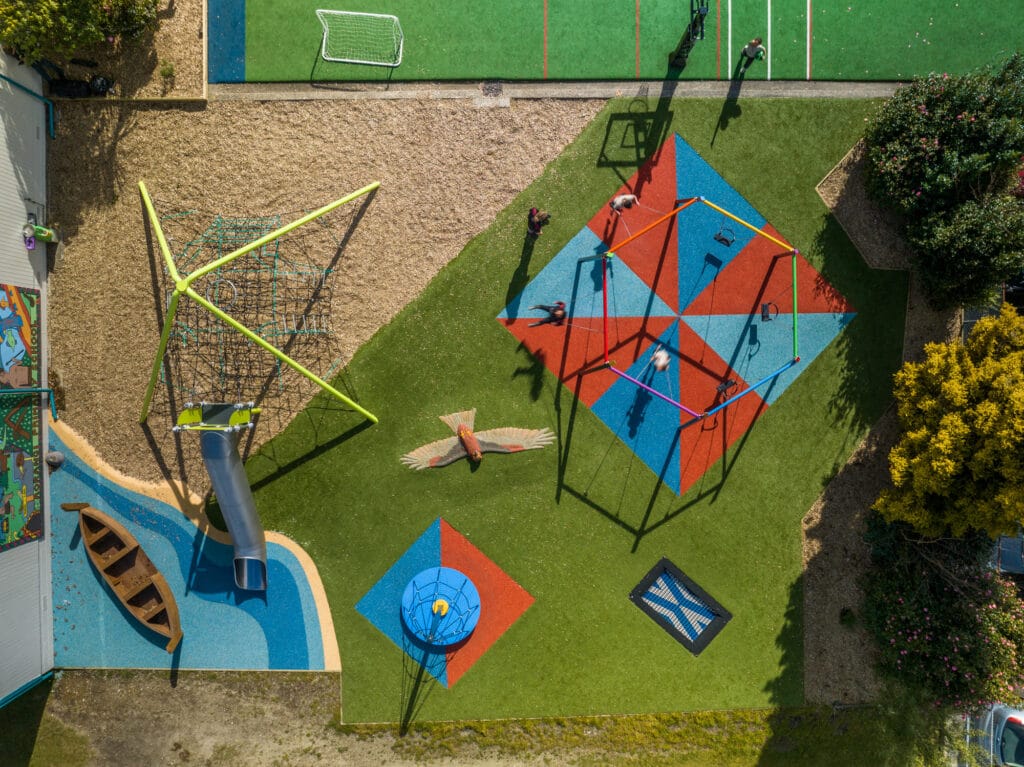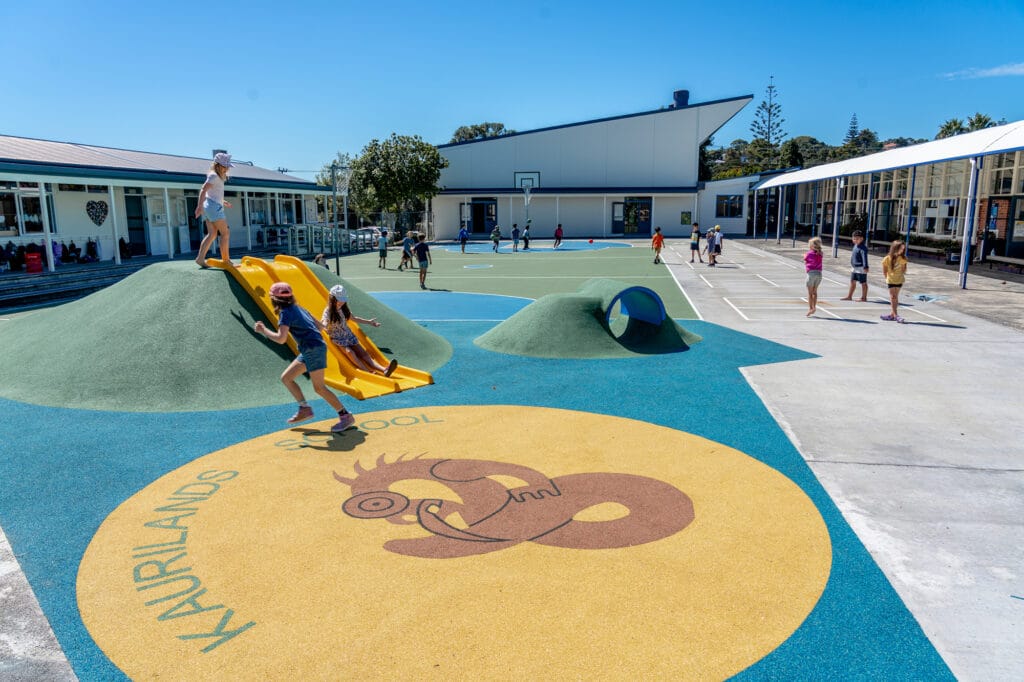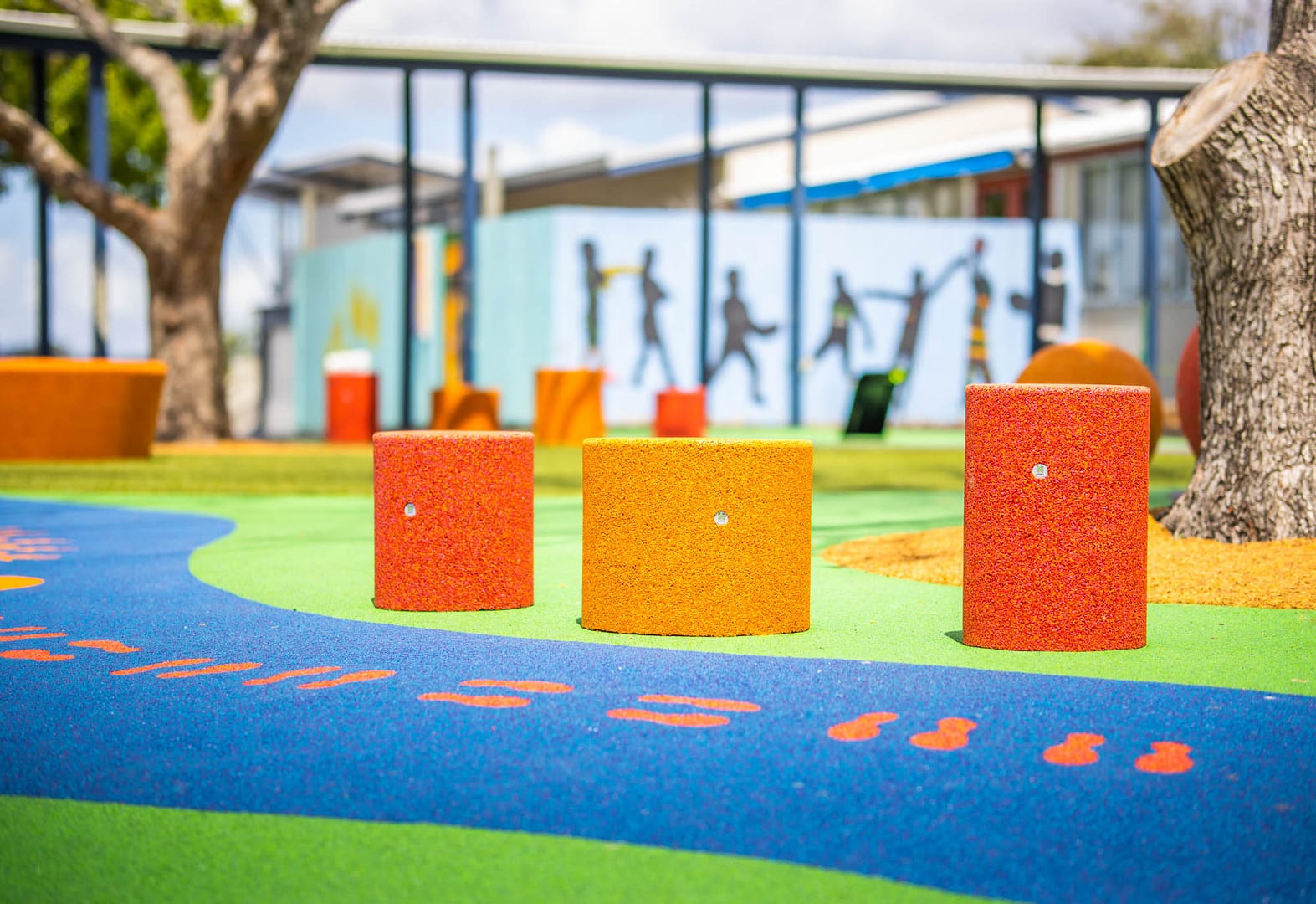Choosing the right surface material is crucial when designing a playspace for your school. Wet pour rubber is a standout option, offering a mix of safety, cost-effectiveness, and design versatility.
In this article, you’ll discover how wet-pour rubber can affect your school playspace project.
Wet pour rubber for you school and Safety
Keeping children safe is at the top of any school playspace list. The design of your playspace needs to offer users challenges so they can grow and have fun through challenges. That comes with the risk of injuries. Wet pour rubber shines here, providing a soft landing for those inevitable tumbles.
It’s designed to cushion falls, significantly reducing injury risk. Plus, it meets the safety standards required for playground surfaces, giving peace of mind to both parents and educators.
When designing your playspace, the height of your equipment will dictate how much shock pad you will need under your wet-pour rubber layer. The higher you go, the more padding you will need, directly affecting the cost of your surfacing.

Wet Pour Rubber Cost
Investing in wet-pour rubber requires an upfront cost higher than other options. On average, a 250m2 school playspace with will cost between $65,000 and $110,000.
However, its durability and low maintenance over time outweigh the initial expense.
It’s a case of spending more now to spend less later, as it avoids the frequent replacements or repairs other materials might need.
Design & Customisation
One of the fun parts of using wet-pour rubber is how creative you can get with it. This material allows for a wide range of colours and patterns, making it possible to customise the playspace to fit any theme or aesthetic.
Whether educational designs or fun patterns, wet-pour rubber can accommodate them, making your playspace as unique as your imagination.
For some customisations, you can integrate our local heritage and your school branding through colours or shapes. You can gamify the surface with different fun activities to keep users engaged.

Problems How to Fix
Like any material, wet-pour rubber isn’t without its issues. It can fade over time, wear down in high-traffic areas, or get hot without proper shading. However, these problems are manageable.
Firstly, opt for a better quality wet-pour rubber. Creo only uses Pour ‘n’ Play, a high-tech rubber surfacing that reduces fading and lasts longer.
The resin you choose to bind your surface is also essential. Opting for a low-quality resin will lower the UV protection, and your surface can get hard with time.
To avoid these potential problems, you should carry out regular maintenance, such as sealing and proper drainage, which can extend the playground’s life and keep it looking great and functioning safely.
Choosing better quality materials will pay off in the long run and will stand out.
Conclusion
Choosing wet-pour rubber for your school’s playspace design brings several benefits. Beyond safety and design flexibility, it’s environmentally friendly, made from recycled materials, and promotes inclusivity by being accessible to all children.
With its blend of practicality and playfulness, wet-pour rubber is a smart choice for creating engaging, safe, and durable play areas that will serve school communities well into the future.
In summary, while the initial cost might be higher, the long-term benefits of safety, durability, and creative freedom make wet pour rubber an excellent investment for any school looking to build or upgrade its playspace.
If you are ready to transform your school, contact our team and discover the possibilities for your next project. Call us on 0800 000 334 or send an email to info@creospace.co.nz




